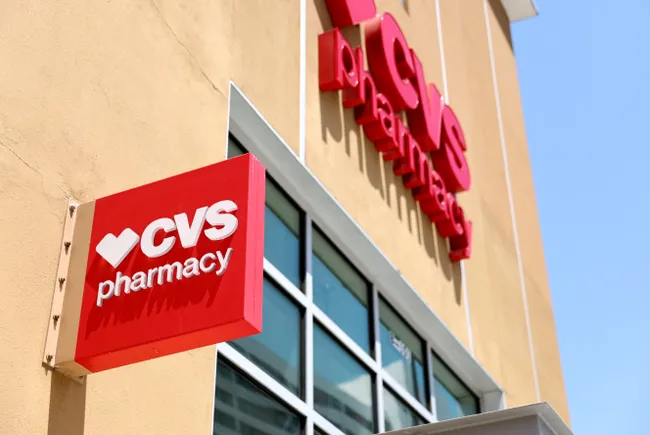Dive Brief:
CVS reported mixed third-quarter results shadowed by heightened medical costs on Wednesday, in the massive healthcare enterprise’s first earnings report with new CEO David Joyner at the helm.
The Woonsocket, Rhode Island-based company beat Wall Street expectations on revenue of $95.4 billion, up more than 6% year over year. However, CVS’ net income fell to $71 million, down from almost $2.3 billion same time last year, as its Aetna insurance arm continued to struggle with higher spending.
CVS appointed Steve Nelson, previously the CEO of value-based primary care company ChenMed, as president of Aetna. Nelson also ran UnitedHealthcare, the largest private insurer in the U.S., from 2016 to 2019.
Dive Insight:
For CVS, this year has been defined by an unsuccessful fight against elevated medical costs. The third quarter was no different.
“We have been more acutely impacted than others in the industry” from rising medical costs in MA and Medicaid, Joyner said on a Wednesday morning call with investors.
Aetna majorly miscalculated utilization trends in pricing Medicare Advantage plans for this year, causing hundreds of thousands of seniors to flock to its generous coverage and saddling the insurer with an unexpectedly steep price tag for their care.
Aetna is also being hit by a dogged dislocation in Medicaid payment rates and member acuity, similar to its insurer peers. The payer is having “constructive” discussions with states on increasing their rates, but currently payments are inadequate to cover the cost of Medicaid beneficiaries’ care, CFO Tom Cowhey said on the call.
Aetna’s medical loss ratio rose to 95.2% in the quarter, up from 85.7% the same time last year. Medical costs in the quarter were elevated in a variety of areas: inpatient, outpatient, supplemental benefits and pharmacy, particularly oncology drugs, according to Cowhey.
Overall, Aetna reported an operating loss of $1.2 billion, compared to a profit of $1.1 billion same time last year.
Much of the loss was driven by a massive premium deficiency reserve of $1.1 billion that Aetna recorded in the quarter. The charge essentially allows insurers to pull forward expected losses into the current reporting period, so it should benefit Aetna’s bottom line in the fourth quarter.
CVS pulled its 2024 guidance in October, after slashing its earnings outlook three times this year. On Wednesday, the company did not issue formal guidance, but did provide loose commentary on the rest of the year that’s unlikely to totally placate investor concerns about Aetna’s near-term financial health.
CVS is comfortable with much of its original guidance. But if Aetna’s challenges persist, the insurer could record a MLR as high as 95.5% in the fourth quarter, Cowhey said. In that case, Aetna would likely have to lodge another premium deficiency reserve, which could further depress bottom-line results.
“2024 has been a disappointing year for performance,” Cowhey said. “It is possible that our healthcare benefits business could show operating losses in 2024.”
However, executives said they’re confident in actions taken to improve margins in 2025, including cutting unprofitable plans, reducing benefits and raising premiums. Aetna expects to lose 5% to 10% of its MA membership as a result, but members remaining should be more lucrative.
“We believe we’ve made the appropriate course correction,” Cowhey said.
Aetna also has new leadership in Nelson, who’s taking the reins at the insurer effective immediately. Citing Aetna’s underperformance, CVS fired division head Brian Kane in August, handing the reins of the business directly to Cowhey and then-CEO Karen Lynch.
Two months later, CVS’ board replaced CEO Karen Lynch with Joyner, who previously ran CVS’ pharmacy benefit manager Caremark.
On Wednesday, CVS also named Prem Shah, who has been with CVS since 2013 in a variety of leadership roles, as group president with oversight of operational performance enterprise-wide.
“The Aetna leadership appointment in particular should be helpful given the focus on stabilizing operating performance,” Michael Cherny, an analyst at Leerink Partners, wrote in a Wednesday note.
As CVS’ stock price hovers at its lowest level since 2019, CVS — last month alone — replaced Lynch and decided to halt underperforming infusion services, close a number of pharmacies and potentially conduct extra layoffs, in addition to the 2,900 employees it already said it would let go.
CVS’ health services division, which includes Caremark, reported operating income of $2.1 billion in the quarter, up 19% year over year. Its pharmacy and consumer wellness division, which includes CVS’ retail pharmacies, reported operating income of $784 million, down 41% year over year.


